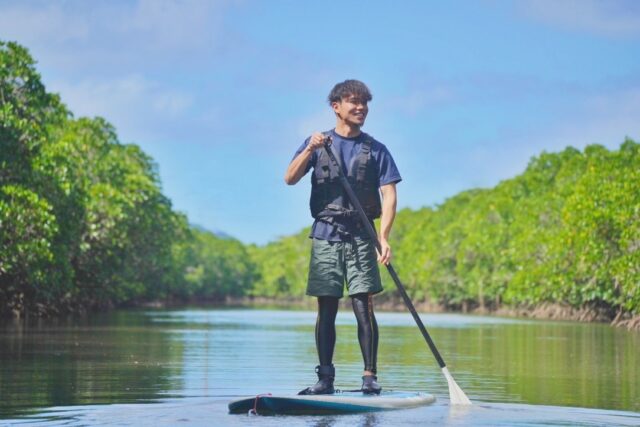Local Column
COLUMN
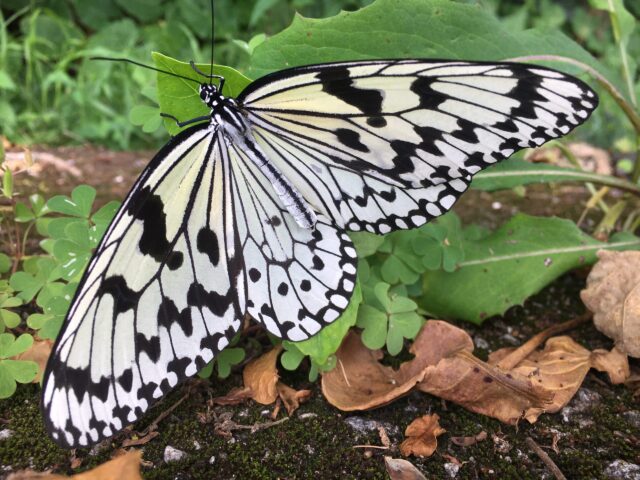
24 living creatures of Ishigaki Island! Ishigaki Island resident staff will give you a thorough explanation!
Hello everyone!
measure of a Japanese-style boat's loading capacity (approx. 278.26 liters)Gaki Island has beautiful ocean, mangrove forests, the highest mountain in Okinawa, and many rivers!It is an island of great natural beauty.
stone wallThe creatures living on the island areIt has established an ecosystem that is completely different from that of the mainland.
This article introduces the creatures of Ishigaki Island.
目次
Creatures of Ishigaki Island
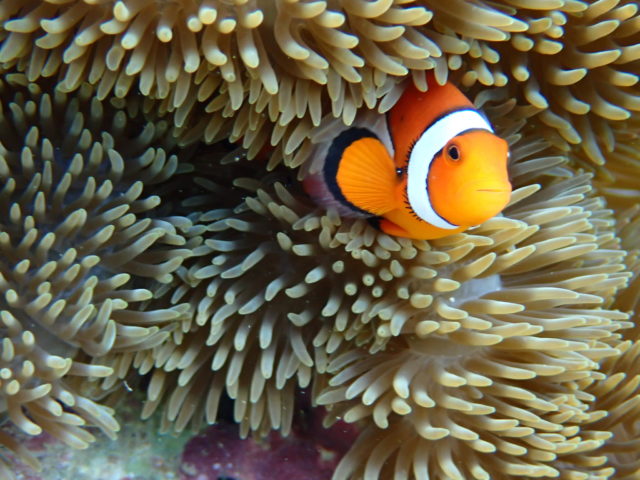
Ishigaki Island is located about 20 km east of Iriomote Island, which is known as the "Galapagos of the East,It is designated as Iriomote Ishigaki National Park.
Animals and plants that cannot be found on the mainlandand many of these endemic species coexist with humans.
Characteristics and reasons for the creatures of Ishigaki Island
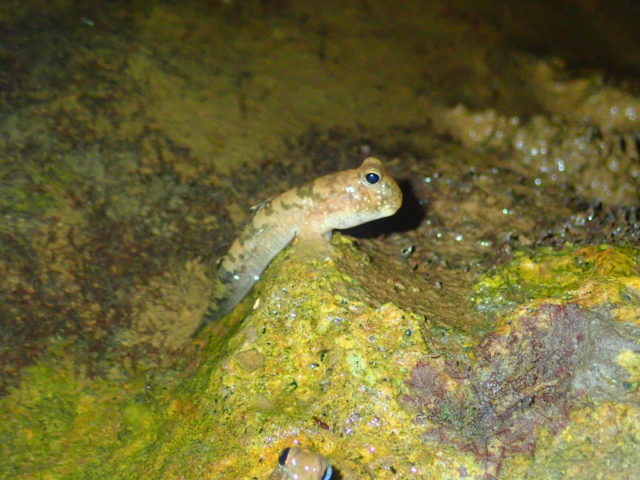
One of the characteristics of Ishigaki Island's endemic creatures is that, compared to related species on the mainland and elsewhere, they areLarge sizeThings to do.
The mild climate makes it a seasonal tradition.lightning bugto be seen all year round.
Migratory birds and other migratory birdsThese include the following.
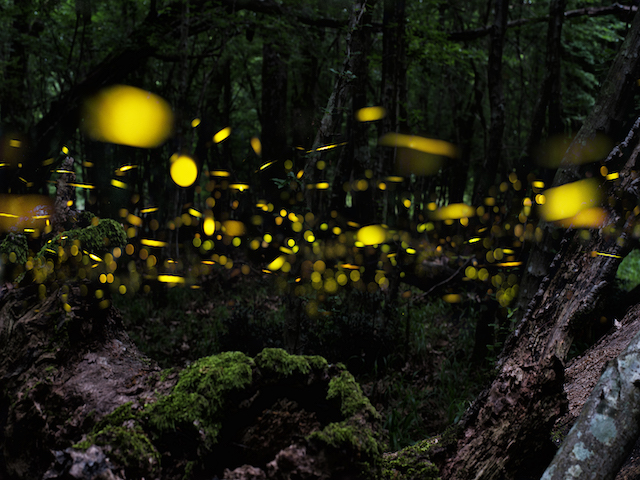
Some of the characteristics of the creatures of Ishigaki Island includeGeographical characteristics play a major role.
Warm environment all year roundand that the animals evolved to adapt to it because of theThey are visiting in search of a warmer place.This can be said to be due to the following reasons.
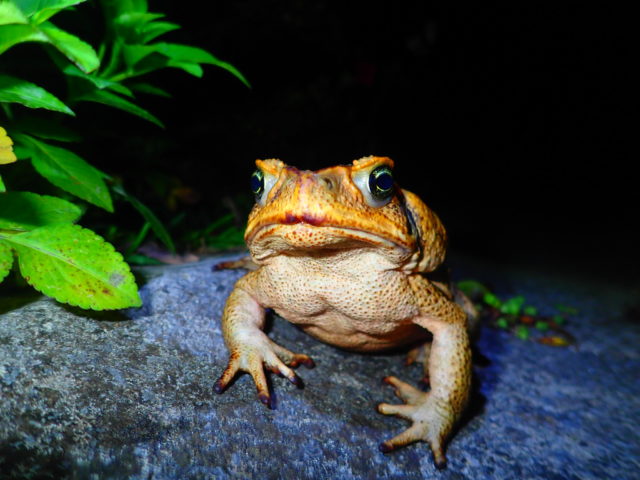
The creatures on Ishigaki Island that are large in size are basically metazoans such as frogs and insects.
lightning bugMigratory birds also seek out warmer climates.
24 Creatures of Ishigaki Island
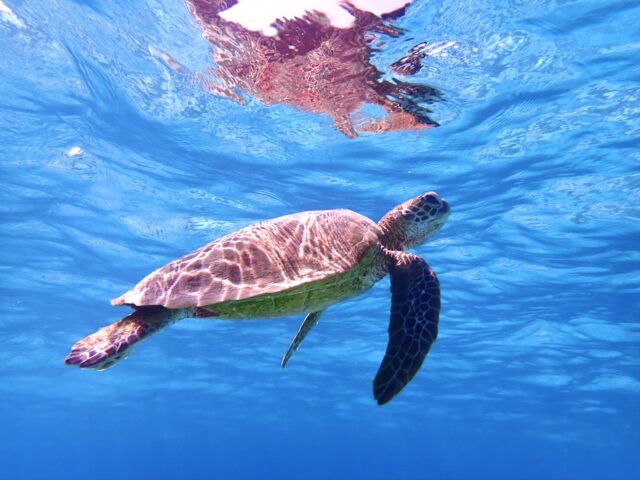
Here we will introduce some of the creatures that live on Ishigaki Island!
actual conditionsWhat kind of creatures are there?A must see!
Animals of Ishigaki Island - Land
We will introduce the creatures of Ishigaki Island by dividing them into two genres: land and sea.
The creatures introduced in the land section areNight TourSome organisms can be seen in
(1) Red-clawed crab
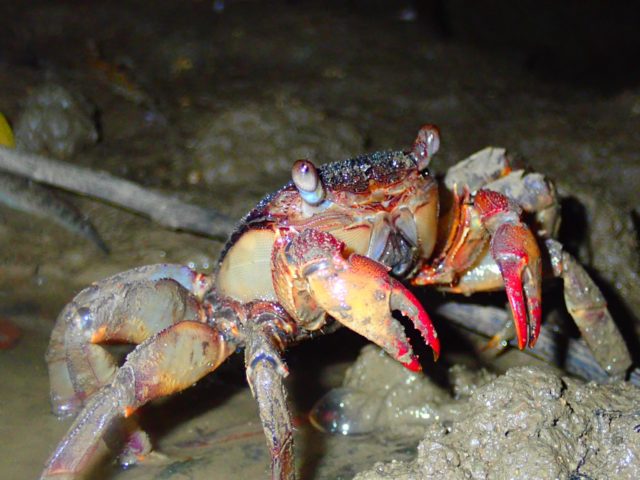
The red-clawed crab is also found on the mainland, but the one on Ishigaki Island is a different species, officially calledRyukyu red-clawed crab (Chiromantes haematocheir)It is.
The carapace is square, the body color is red, and the scissors are almost the same size on both sides, even on large male specimens.
During the breeding season, from June to October, they are often found at night with small eggs.
presentHabitat of the Ryukyu red-clawed crabis the construction of seawalls and landfills.The ecology is greatly affected.
(2) Okinawa anadarko
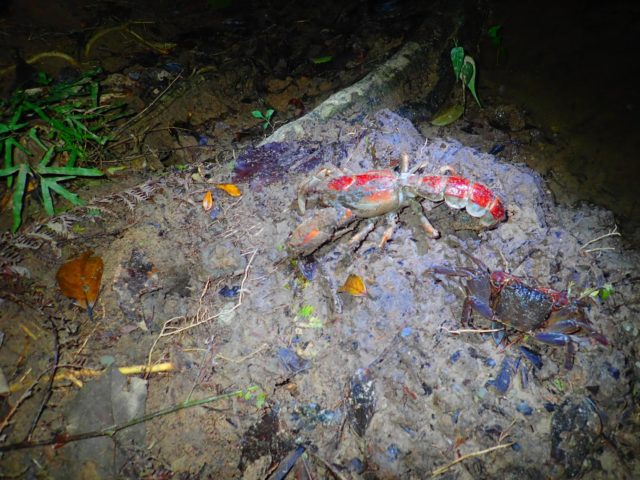
Often seen while exploring in mangrove forests,Where the mud is heaped up in mounds.andOkinawa anadarko nestIt is.
They usually live in their nests and are rarely seen, but can be seen occasionally.
They are about 155 mm long and have a bright red or dark red body color, depending on the individual. They can be seen at night.
Nocturnal and in the nestIn many cases, the company is not able to provide the same level of service,You will be lucky to find it.
(iii) coconut crab
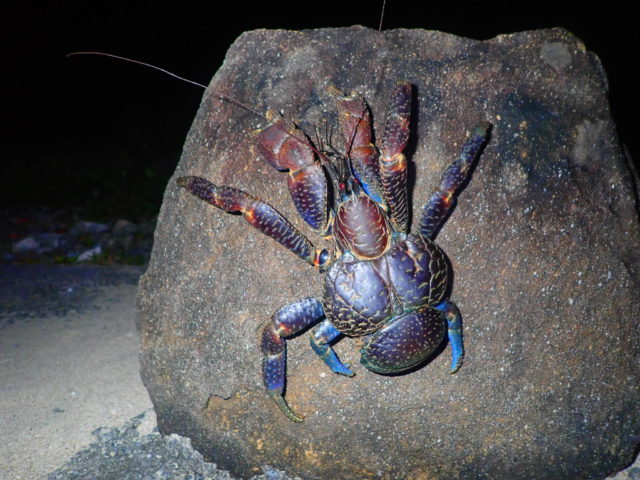
The coconut crab is a nocturnal, crustacean creature that is almost exclusively found in the Yaeyama Islands.
Lifespan is more than 50 yearsThere is a top,The power of the scissors of large individuals is said to exceed 100 kg.
It is the largest species of crustacean that lives on land. By all meansNight TourLet's take a look at it in
Drosophila melanogaster (species of grasshopper)
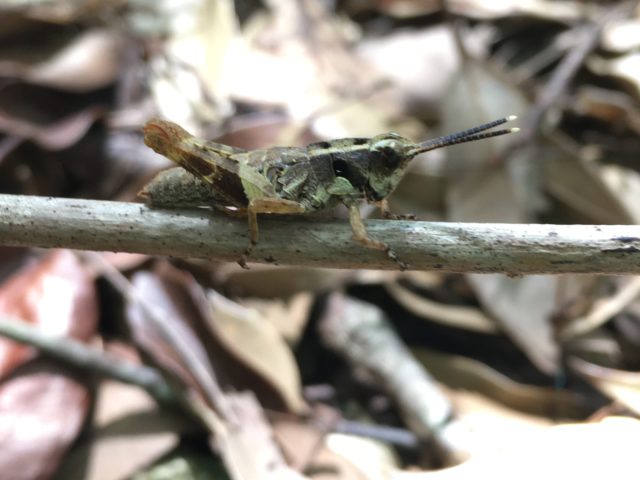
It is a subspecies of the Ishigaki Island subspecies of the harpoon grasshopper that inhabits the Ryukyu Islands,It is a valuable species found only on Ishigaki Island.
They are characterized by their whitish body color, and are assimilated by sticking to tree trunks and the like.
It can be found all year round,Inhabits forests and forest marginsThe first is easy to find because it is a
They are very wary grasshoppers and will fly away quickly.
(5) Giant sesame butterfly (Cynoglossus joyneri)
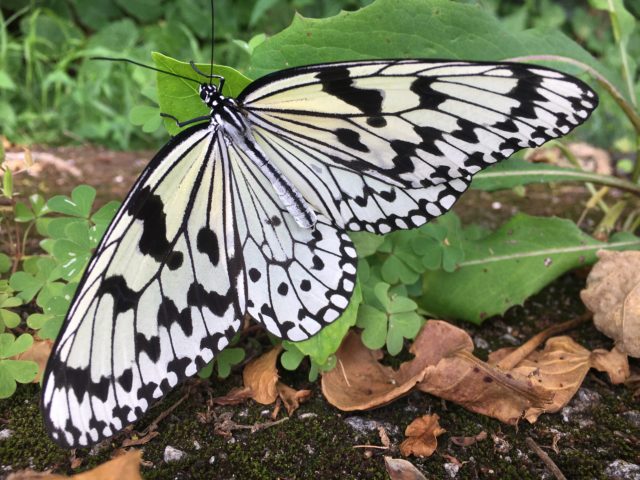
Japan's largest butterfly, the giant tiger butterflyThe maximum size of the fish is said to be 13 cm to 15 cm.
On Ishigaki Island, you can see them flying gracefully.
The fluttering macropods are truly beautiful and mesmerizing.
The golden chrysalis of the giant sesame butterfly is also attractive.
6) Oshima Mado Botaru
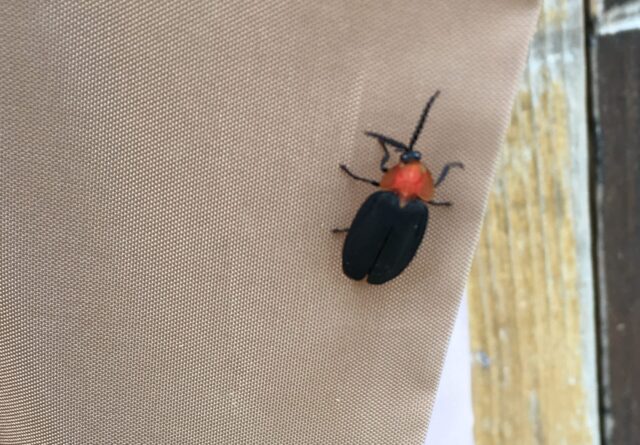
Japan's largest firefly (Luciola cruciata)Known asOshima Mado Botaru.
Males are about 2 cm long, and some females are over 3 cm long.
10 to February.Can be seen on Ishigaki IslandFireflies in winter.
Larvae also emit lightIf there was a faint glow at the feet of theLarva of Oshima Mado BotaruMaybe.
(7) Saxima hirata stag beetle
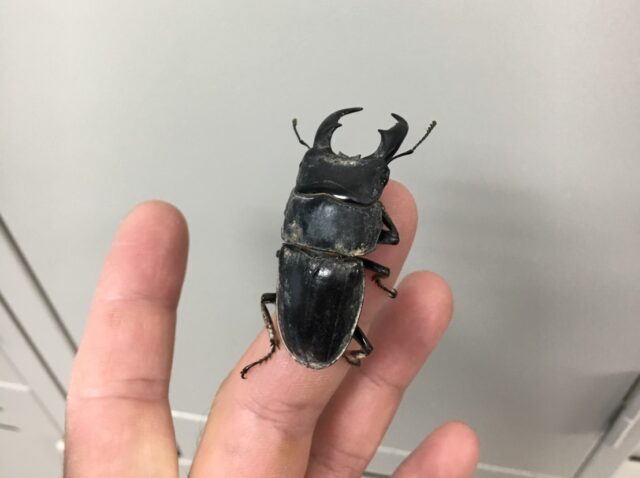
Dorcus rectus (species of stag beetle)is a stag beetle that lives in the Yaeyama Islands,The most commonly seen stag beetle in Ishigaki IslandIt is.
The subspecies of the flatback stag beetle that lives in Japan isOne of the largest species.
It is easy to keep, fertile, and grows relatively quickly.Sent to the mainland for breeding purposesOften.
(viii) Indian peacock
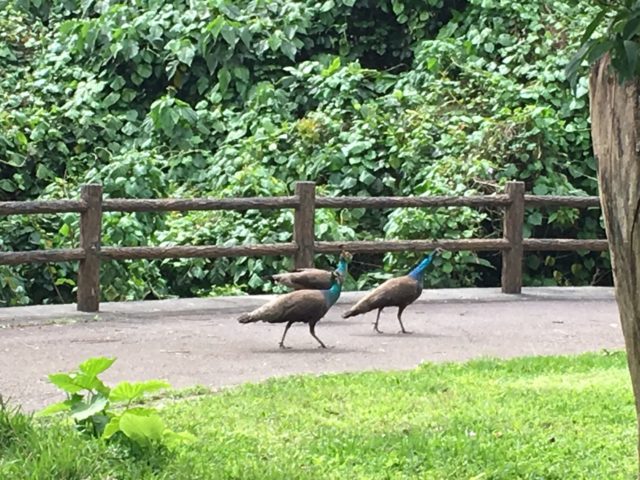
Artificially introducedThe Indian peacock, which can be seen in zoos and other places, is also found in the
Ishigaki Island has a mild and warm climateIn addition, peacocks breed because food is plentiful and they have no natural enemies.
Omnivorous,It preys on lizards, including the endangered natural treasure, the Xenopus lizards,It is a factor in the destruction of ecosystems.
Not only is the ecosystemExtensive damage to humansand devour the crops in the field.
crested serpent eagle (Spilornis cheela)
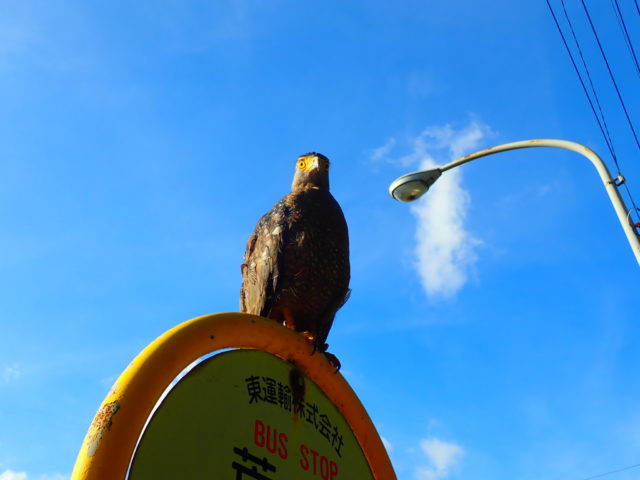
In Japan, crested serpent eagles are found only in the Yaeyama Islands.
Back of the head.Crown feathers mixed with white feathers growThis is why it is called the crowned eagle.
Rare species designated as special natural monuments and endangeredHowever, I sometimes see them in the forests of Ishigaki Island.
(10) Little Egret
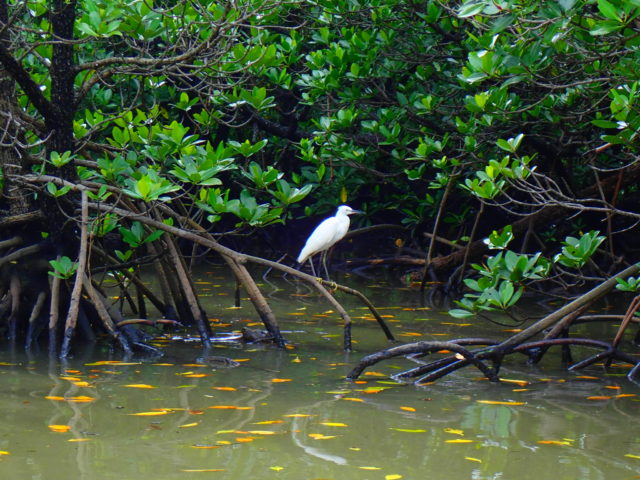
In the heron family.Visiting Ishigaki Island from Honshu for winteringIt is known for its
They are white all over and have two long ornamental feathers on their head during the breeding season. The beak is black all year round.
On the island, they can be seen searching for food in shallow waters such as beaches and rivers.
After winter, they return to the Japanese mainland.
(11) Toads
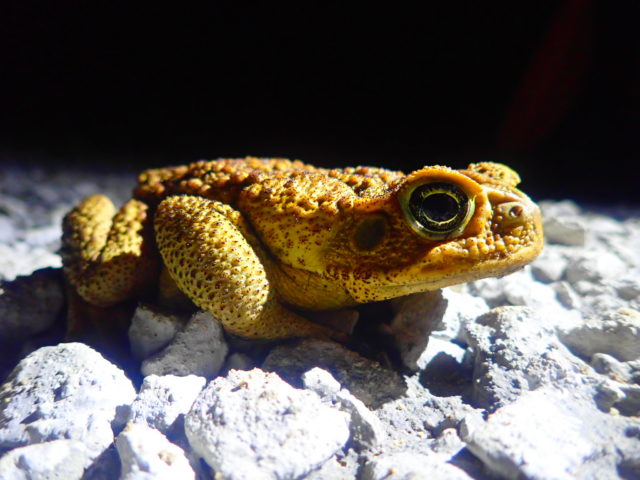
A large frog, 8-15 cm in length, native to South America. It is mainly found inAn invasive species found in ponds and rice paddies.
They have large venom glands behind their ears called ear glands, and when attacked by an enemy, they emit poison from the skin on their backs.
There is no problem for normal touching, though,Wash your hands properly after touching them.
Transylvanian monitor lizard (Varanus transylvanicus, species of carnivorous monitor lizard native to Japan)
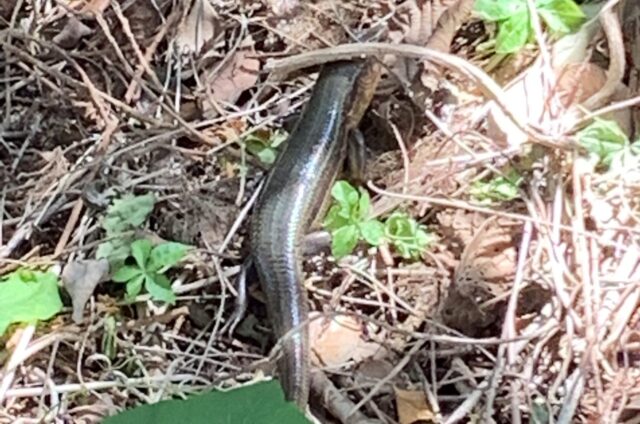
It is an endemic species distributed throughout the Miyako and Yaeyama Islands, and is also found on Ishigaki Island.
They grow to about 40 cm in length,It is the largest species of lizard in Japan.
It is often found in relatively open areas such as grasslands and coastal forests, though,Captured by an exotic speciesThe number of such cases has been decreasing in many cases.
henceIt is designated as a national natural monument.
Ryukyu tree lizard (Japalura polygonata)
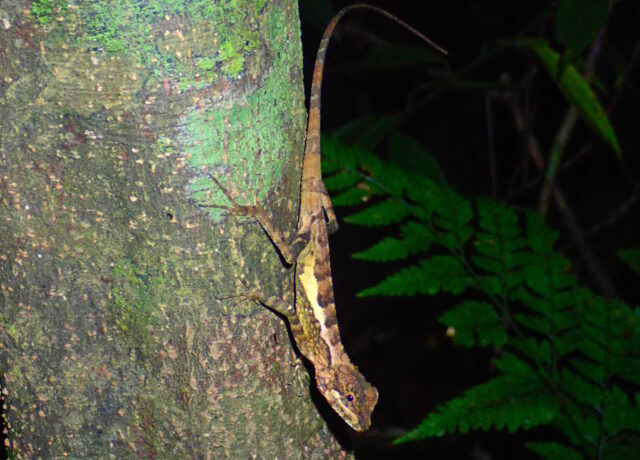
This lizard is named Kinobori lizard because it climbs trees.
I'm on Ishigaki Island.Okinawa tree lizard (Lizardia okinawae)The male is entirely green and the female is light green!The following is a list of the most common problems with the "C" in the "C" column.
Found in mountainous areas and near human habitationIt can be said that they are popular lizards in Ishigaki Island.
Sinictinogomphus clavatus (species of clubtail snake)
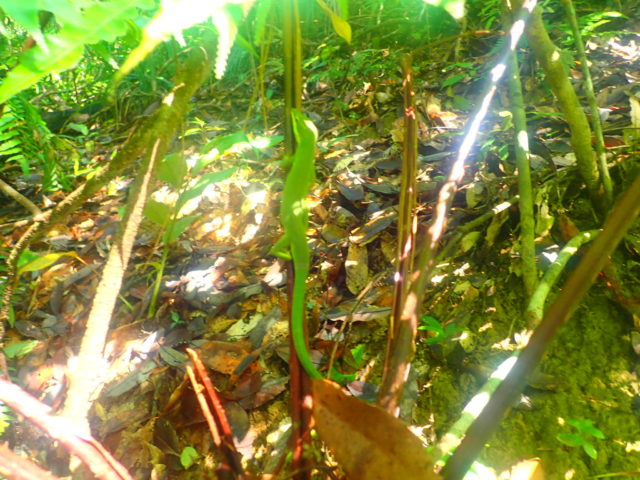
Saxum caecilianum (species of lacertid snake)school (e.g. of ikebana)Ishigaki Island's endemic canahebiAs for the canada snakes distributed in Japan inlargest speciesThe first two are the following.
Inhabits mangrove forests and other forests.They are animalivores, living on a diet of insects and other animals.
In 2020.Also designated as a domestic rare wild animal and plant speciesBecause of,Capturing and killing are also prohibited.
Creatures of Ishigaki Island - Sea
Ishigaki Island is also known for its beautiful ocean.
In the sea of Ishigaki IslandWhat kind of organisms are there?I'm curious about that.
Some of the creatures that live in the seaSome creatures can also be encountered on snorkeling tours!
(15) Sea turtles
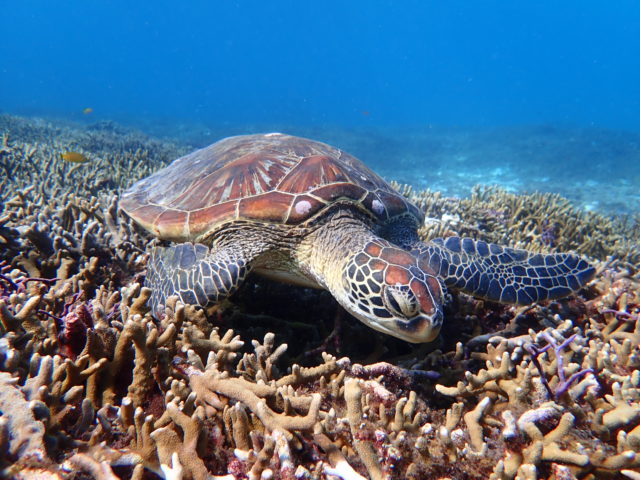
The most popular tour to see at least once in Ishigaki Island issea turtleIt is.
Commonly seen around Ishigaki Island aregreen turtle (Chelonia mydas)and feed mainly on coral and seaweed.
Don't miss the moment when they catch their breath and the cute sight of them feeding!
⑯ manta ray
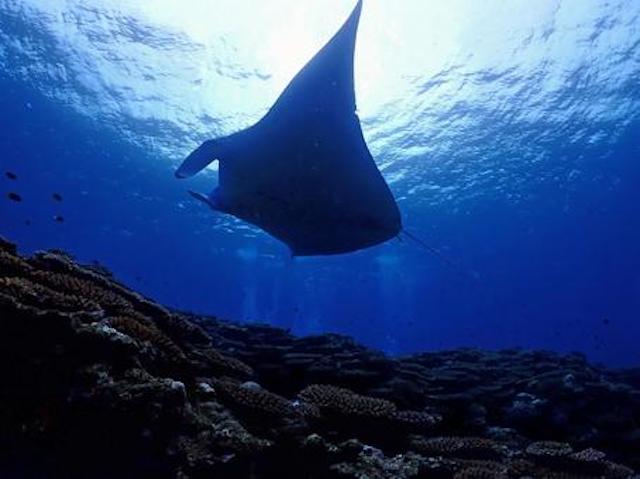
manta rayThe "manta rayand "common sandeel (Actinidia arguta)The "2 typesare present.
Around Ishigaki Island, it is mainly known ascommon sandeel (Actinidia arguta)You can see the "I'm not a fan of this".
They are mild-mannered, curious, and not very cautious.
In Ishigaki IslandMarch - Octoberperiod (especially during the breeding season, September-October), the probability is high.manta rayYou can meet with
Clownfish

The clownfish made famous by Finding NemoThe species is found in the waters of Ishigaki Island.
Symbiosis with sea anemonesThe fish are sometimes seen peeking out of the anemone when looking at the seafloor.
Gender change.It is also known for itsThe largest individual in the herd is the female.and thenThe second largest individual is a malewill be.
coral reef
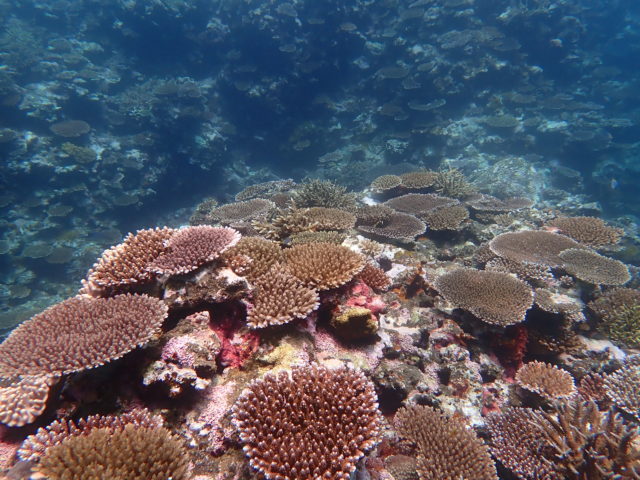
Corals are members of the phylum Cnidaria.
The color of the coral isPlankton called zooxanthellae photosynthesize.The color of the material can be varied by
Between Ishigaki Island and Iriomote IslandThe largest coral reef area in Japan called Ishinishi lagoonis spreading.
As a result, there are many popular spots for snorkeling and diving.
Dangerous Creatures on Ishigaki Island
Some of the creatures that inhabit Ishigaki Island are"Dangerous."Some organisms are considered to be
Organisms to watch out for when sightseeingWe will also provide information on
(19) Habu Jellyfish
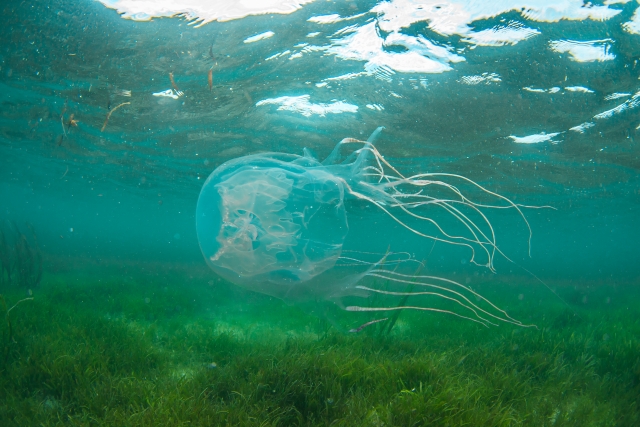
northern sea nettle (Chrysaora melanaster)belongs to the genus Habu Jellyfish of the family Nettaiidontoceratidae,This jellyfish has a strong neurotoxin.
If you get stung by a habu jellyfishIntense pain occurs, and the site of the tentacles may develop worm sores, blisters, and cell necrosis.
In the case of severe injury, symptoms of shock are followed by respiratory distress and cardiopulmonary arrest,In the worst case, it can lead to death.
It is very dangerous, so use a prevention net, etc.Use extreme caution when visiting unmanaged beaches!
spotted ratfish (Hydrolagus colliei, a shortnose chimaera found in the Eastern Pacific)
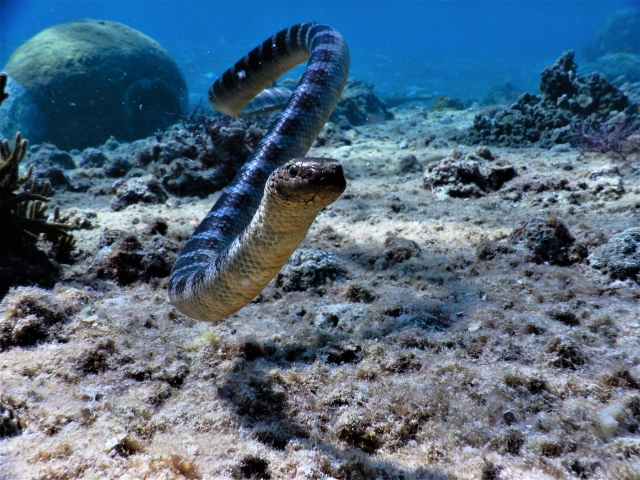
Erabu black-banded sea krait (Laticauda semifasciata)is a venomous snake of the marine cobra family Elapidae, the elapid snakes.
He is mild-mannered, but...Its venom is 80 times more potent than that of a habu, and its bite is deadly.Therefore, please be careful.
The pattern looks cute, but it is very dangerous, so even if you find itNever approach them.
212-221
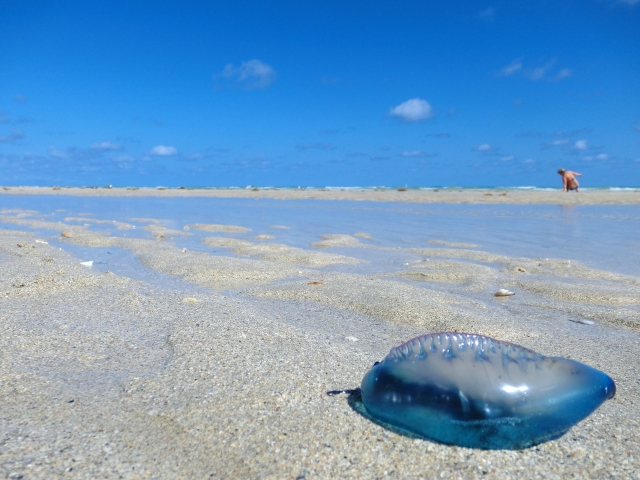
A cnidarian belonging to the order Ctenophora of the Bonobranchia, it is actually not a jellyfish but a hydrozoan.
The name comes from the grouping formed by multiple hydrozoans.Shaped like an eboshiBecause of.
The tentacles have very strong venom.The sting is extremely painful.
In the worst case, it can lead to death.Therefore, never touch them even if you see them.
blue-ringed octopus (esp. one species, the blue-lined octopus, Hapalochlaena fasciata)
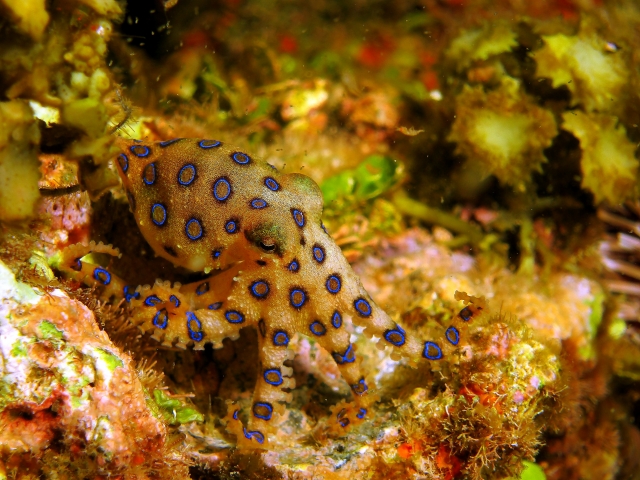
blue-ringed octopus (esp. one species, the blue-lined octopus, Hapalochlaena fasciata)is a small octopus about 10 cm long, but its saliva contains a powerful neurotoxin similar to pufferfish poison.
It is a very fearsome creature, and if you are bittenIn some cases, the worst case scenario is death.
When poked or stimulated, the leopard octopus will display a lapis lazuli-colored ring or barred pattern all over its body.
It looks like a leopard print.Because of,"Leopard octopus."It was named
crown-of-thorns starfish (Acanthaster planci)
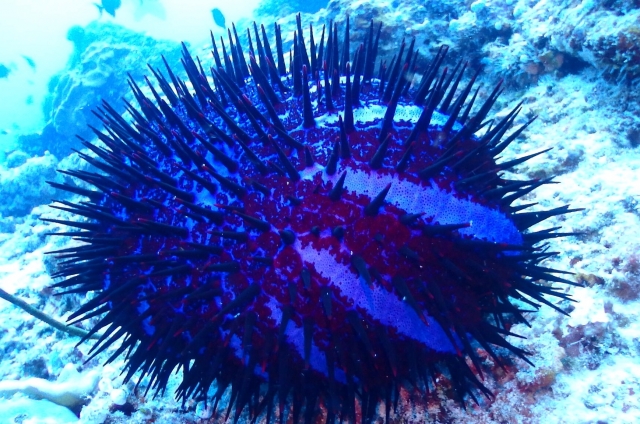
Starfish are widely distributed in seas with corals,Adults prey on coralsThis was a problem because of the
Because of their high reproductive capacity, they were abundant for a time, resulting in large-scale coral predation.
The sting of a crown-of-thorns starfish causes severe pain,Anaphylactic shock can cause severe illness.
Landscape protection and safetyIn both respects, it is a creature with many problems.
red lionfish (Pterois volitans)
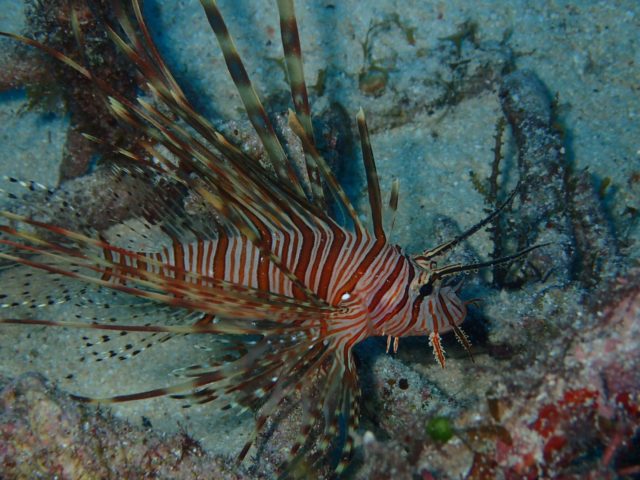
The dorsal fins of the dogfish are mainly venomous, due to the presence of the turgor between the ventral fins,It is very dangerous to touch them.
The sting causes severe pain and swelling of the affected area,Severe symptoms include nausea and abdominal painwill also appear.
If you have been stung,Apply first aid by applying 40-45°C hot water to the affected area.
After the procedure is performedNeed to see a nearby health care provider as soon as possible.Remember, the more you know, the more you will be able to use it.
Ishigaki Island Recommendation
5 activities
The creatures that live on Ishigaki Island are found in the jungle and in the sea.They are found in a variety of fields.
Even with activities performed in a variety of fieldsYou may encounter rare creatures!
Here are some recommended activities on Ishigaki Island!
Activities on Ishigaki Island
1) Jungle & Starry Sky Night Tour

The first tour we will introduce is the "Jungle & Starry Sky Night Tour".
Countless stars can be seen in the night sky,The subtropical nature is home to many unusual creatures.
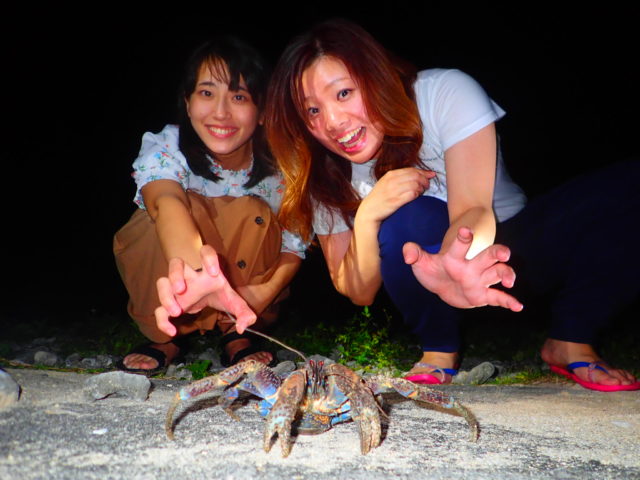
The subtropical species are also very attractive, and as you may know, the coconut crab is one of the most popular creatures!
It is only on Ishigaki Island that you can see the coconut crab, one of the largest crustaceans.It will be a rare and memorable experience!
Activities on Ishigaki Island
(2) Blue Cave Snorkeling
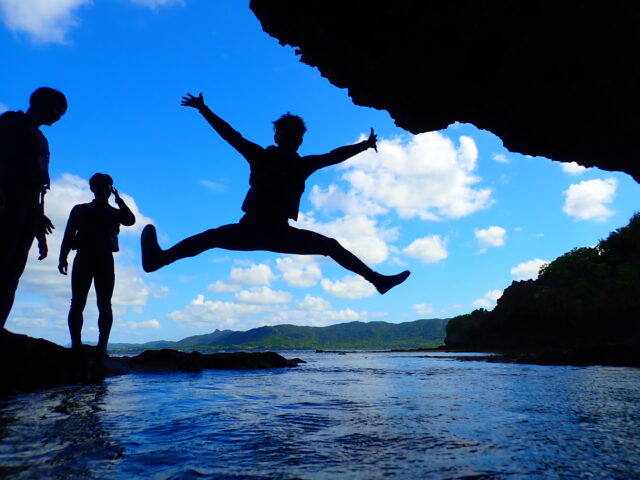
Blue Cave, located near Yonehara Beach in the northern part of Ishigaki Island, is a popular snorkeling spot.
The surrounding sea is home to colorful fish and coral reefs,It can be enjoyed by small children and adults alike.

On Ishigaki IslandOnly the Blue Cave offers both cave exploration and snorkeling!
If you are lucky, you may see sea turtles!
Activities on Ishigaki Island
Miyara River Canoe Tour
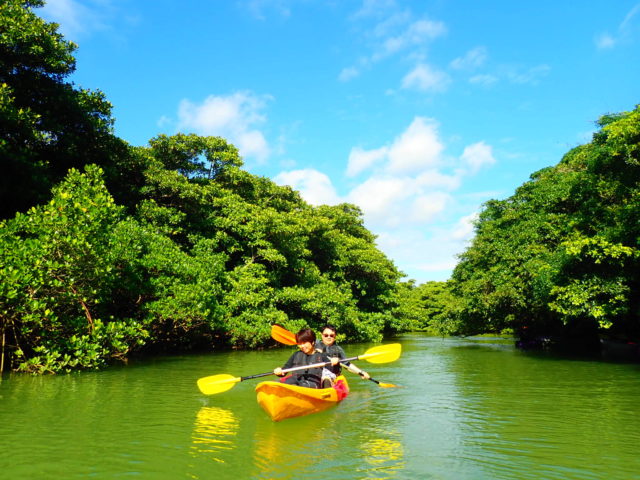
Very popular activity where you can feel the nature of Ishigaki Island.Miyara River Canoe TourIt is.
Designated as part of Iriomote Ishigaki National Park, a national parkCanoeing through the mangrove community of the Miyara River.
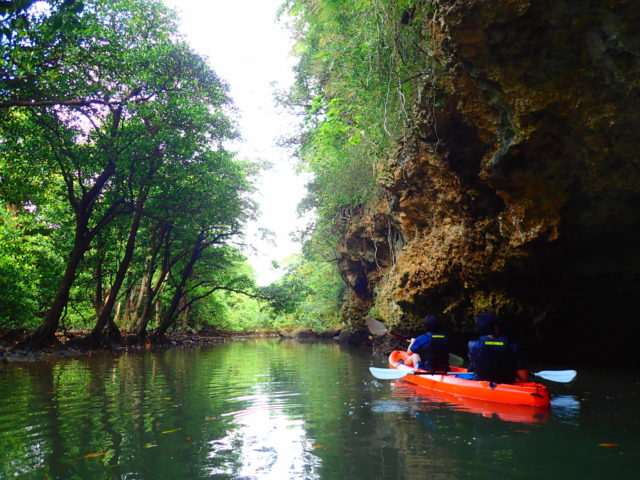
As we continue upstream,Ryukyu coral limestoneis exposed in some areas.
You may encounter rare creatures during the tour! Ishigaki Island createdYou will be amazed at the power of nature!
Activities on Ishigaki Island
Island Snorkeling
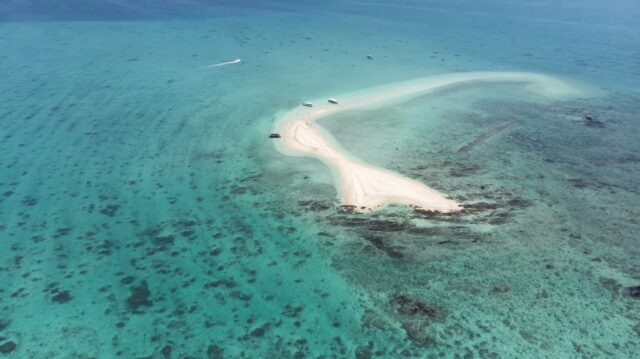
Snorkeling at the popular "Phantom Island" in Ishigaki Island is,It is a recommended activity that you should not miss when you come to Ishigaki Island.
The phantom island is called Hamashima and is an uninhabited island made of pure white sand.
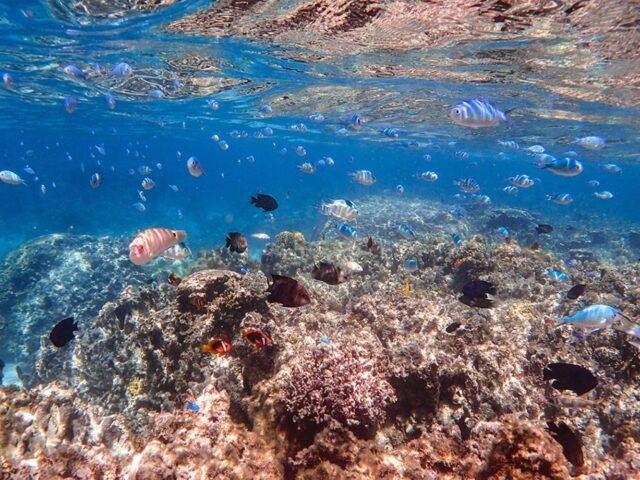
Points inhabited by coral reefs and tropical fishSnorkeling at the
Offshore, if you're lucky.Sea turtles and manta raysYou can encounter the following, so look for them!
Activities on Ishigaki Island
5) Firefly Tour
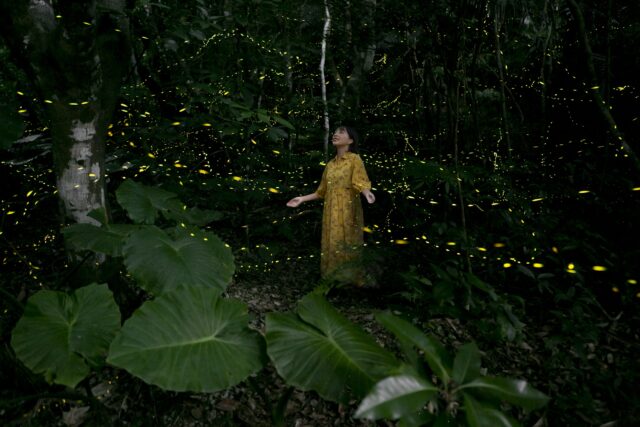
Firefly tours are available from March to May!
It is said to be the smallest in Japan at this time of year.Rhizophora mucronata (species of midge)is often seen.
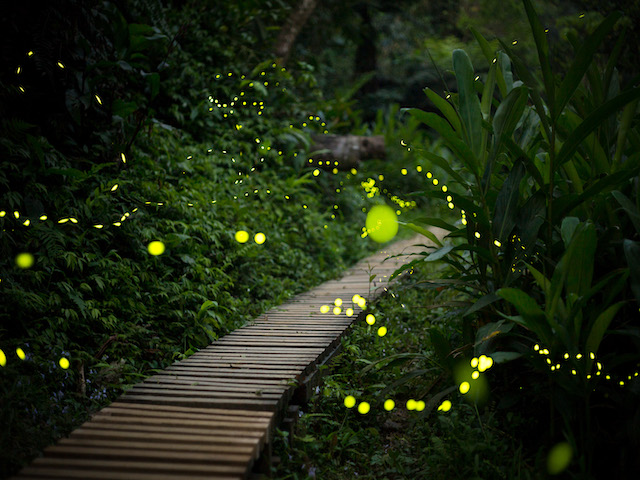
The fleeting light emitted by the Yaeyama firefly impresses people.
When you visit Ishigaki Island from March to Mayis a great place to see beautiful fireflies.
Mail order is recommended for souvenirs!

We have introduced the creatures of Ishigaki Island!
When you visit Ishigaki Island, please look for creatures unique to the subtropical zone that you cannot find on the mainland.
such (about the actions of the listener, or about ideas expressed or understood by the listener)We recommend purchasing souvenirs of Ishigaki Island by mail order!

It won't take up valuable time or add to your carry-on luggage.
By mail order, you can buy it whenever you want, 24 hours a day, so please take a peek at the link below!
|
over-the-counter (financial) |
You can check the real thing. You can ask questions on the spot. |
| store (Demerit) |
More baggage. Time for travel will be allocated. |
|
net (hair, netball, etc.) |
A wide variety of types of products. Available 24 hours a day, 7 days a week. |
|
net (hair, netball, etc.) |
Shipping costs will be charged. The actual product cannot be confirmed in person. |
in the end
The creatures that inhabit Ishigaki Island range from the rare to the dangerous.There is a wide variety of species.
Dangerous creatures inhabit the area.Therefore, when playing in nature, such as in the oceando some research in advanceIt is important to
When you visit Ishigaki Island,While taking care of the safety aspectEnjoy observing the numerous creatures!
Thank you for reading to the end.

